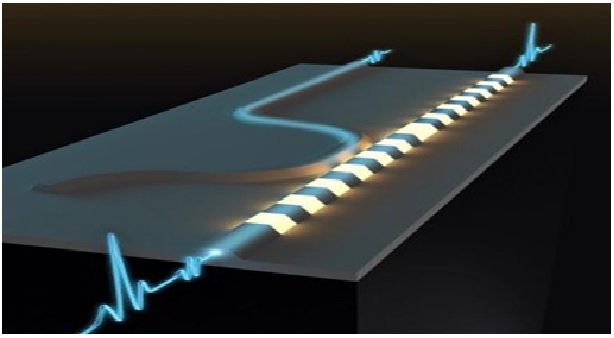Caltech’s New Optical Switch could lead to Ultrafast Signal Processing
Engineers on the California Institute of Expertise (Caltech) have developed a change—some of the basic parts of computing—utilizing optical, slightly than digital, parts. This growth might support efforts to realize ultrafast all-optical sign processing and computing.
By utilizing pulses of sunshine slightly than electrical alerts, optical gadgets have the capability to transmit alerts far quicker than electrical gadgets. That's the reason fashionable gadgets typically make use of optics to ship knowledge. For instance, fiber optic cables present a lot quicker web speeds than standard Ethernet cables. [1]

Figure 1. Caltech’s New Optical Switch could lead to Ultrafast Signal Processing
Figure 1 shows however, one of the major limitations of today’s optics-based systems is that at some point they still need to have electronics-based transistors to process data efficiently. Now, harnessing the power of optical nonlinearity, a team of engineers led by Alireza Marandi, an assistant professor of electrical engineering and applied physics at Caltech, has created an all-optical switch. Such a switch could eventually enable data processing using photons. [2]
Switches are among the simplest components of a computer. A signal comes into the switch and, depending on certain conditions, the switch either allows the signal to move forward or stops it. That on/off property is the foundation of logic gates and binary computation, and is what digital transistors were designed to accomplish. However, until this new breakthrough, achieving the same function with light has proved difficult. Unlike electrons in transistors, which can strongly affect each other’s flow and thereby cause “switching,” photons usually do not easily interact with each other. [3]
While lithium niobate crystals have been used in optics for decades, more recently, advances in nanofabrication techniques have enabled Marandi and his team to design lithium niobate-based integrated photonic devices that allow light to be confined in tiny spaces. The smaller the room, the greater the light intensity with the same power.
The end result is the creation of a nonlinear splitter in which the light pulses are routed to two different outputs based on their energy, allowing switching in less than 50 femtoseconds (a femtosecond is one quadrillionth of a second). In comparison, modern electronic switches take tens of picoseconds (a picosecond is a trillionth of a second), a difference of many orders of magnitude. [4]
References:
- https://lightaholictech.blogspot.com/2022/08/caltechs-new-optical-switch-could-lead.html
- https://www.techgoing.com/caltech-develops-new-optical-switch-that-could-lead-to-ultra-high-speed-signal-processing/
- https://scitechdaily.com/caltechs-new-optical-switch-could-lead-to-ultrafast-signal-processing/
- https://techsens.in/caltechs-new-optical-switch-could-lead-to-ultrafast-signal-processing/
Cite this article:
Thanusri swetha J (2022), Caltech’s New Optical Switch could lead to Ultrafast Signal Processing, Anatechmaz, pp. 388

